The Aare Gorge is a section of the river Aare that carves through a limestone ridge near the town of Meiringen, in the Bernese Oberland region of Switzerland. The gorge is an indirect product of glaciation. 10,000 years ago, just as the Ice Age was coming to an end, torrential runoff water from melting glaciers eroded a deep, narrow chasm through the limestone barrier.
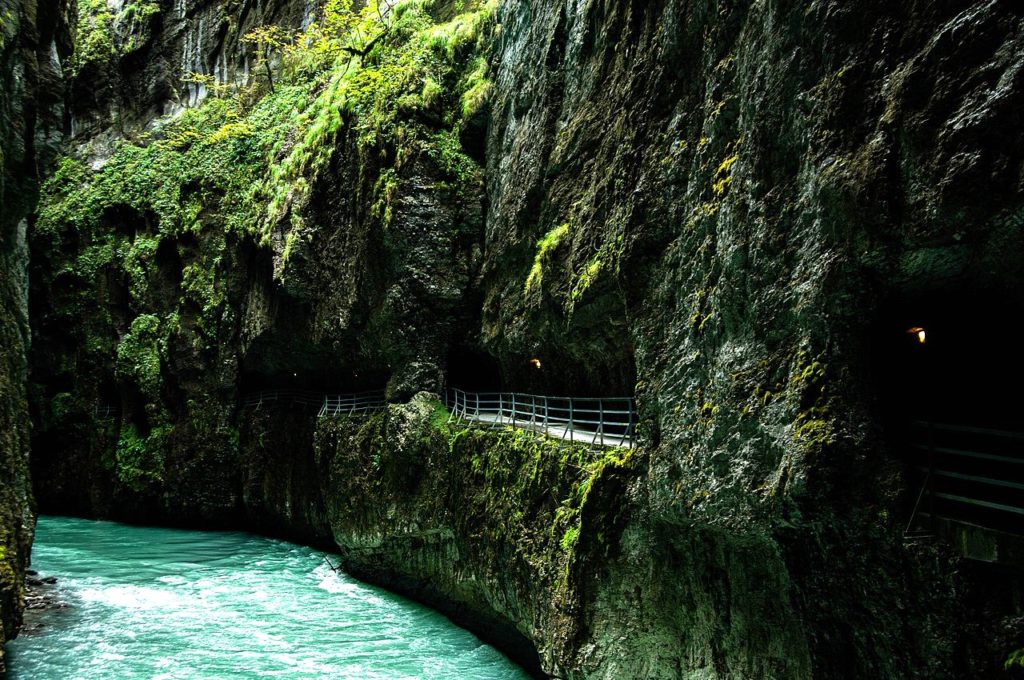
The gorge is 1.4 kilometers long and up to 200 meters deep, with towering cliffs and cascading waterfalls. One of the most striking features of the Aare Gorge is its dramatic scale and contrast. The towering cliffs and narrow passageways create a sense of awe and wonder, while the rushing river and waterfalls provide a sense of power and dynamism.
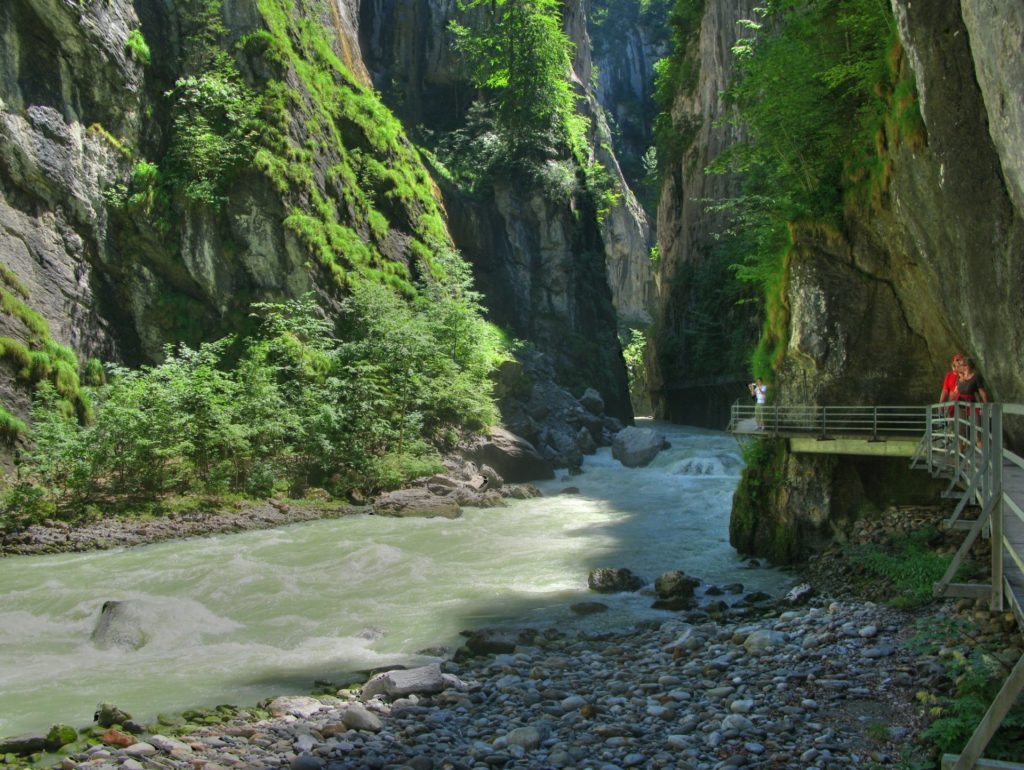
The gorge is also known for its stunning turquoise waters. The water color is caused by a combination of factors The Aare Gorge is carved into limestone rocks. Limestone is a type of rock that is made up of calcium carbonate. When sunlight hits calcium carbonate, it reflects back the blue and green light wavelengths. This is why limestone cliffs and caves often have a bluish or greenish tint.
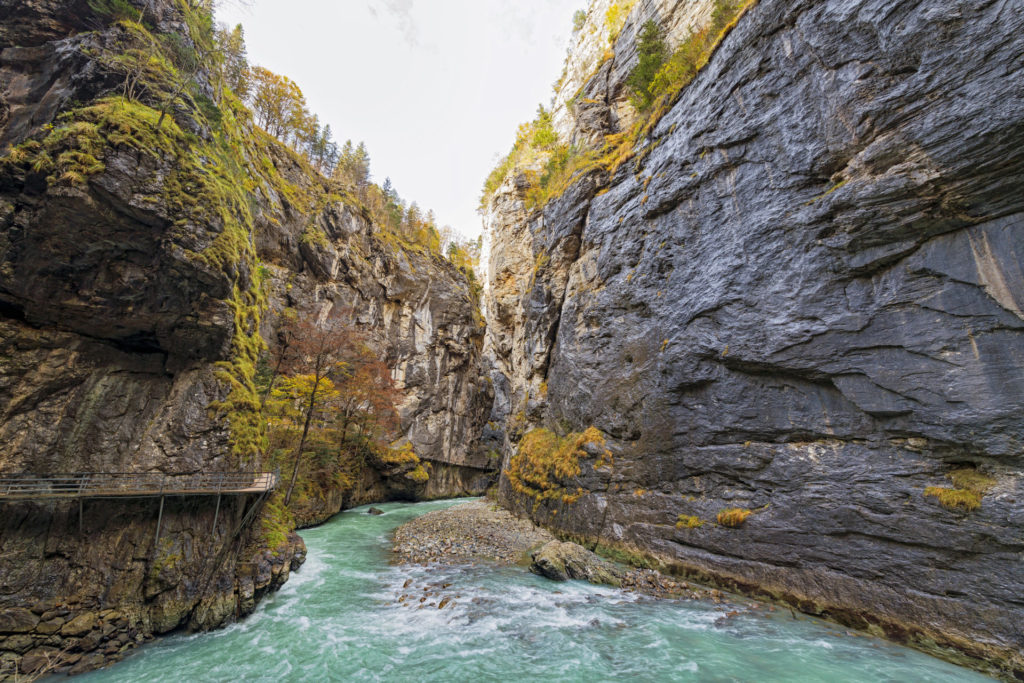
The path through the gorge is accessed by entrances at each end of the gorge, where an admission charge is levied. For most of its length the path is a wooden construction on a metal frame cantilevered out from the wall of the gorge, with short stretches in tunnel.
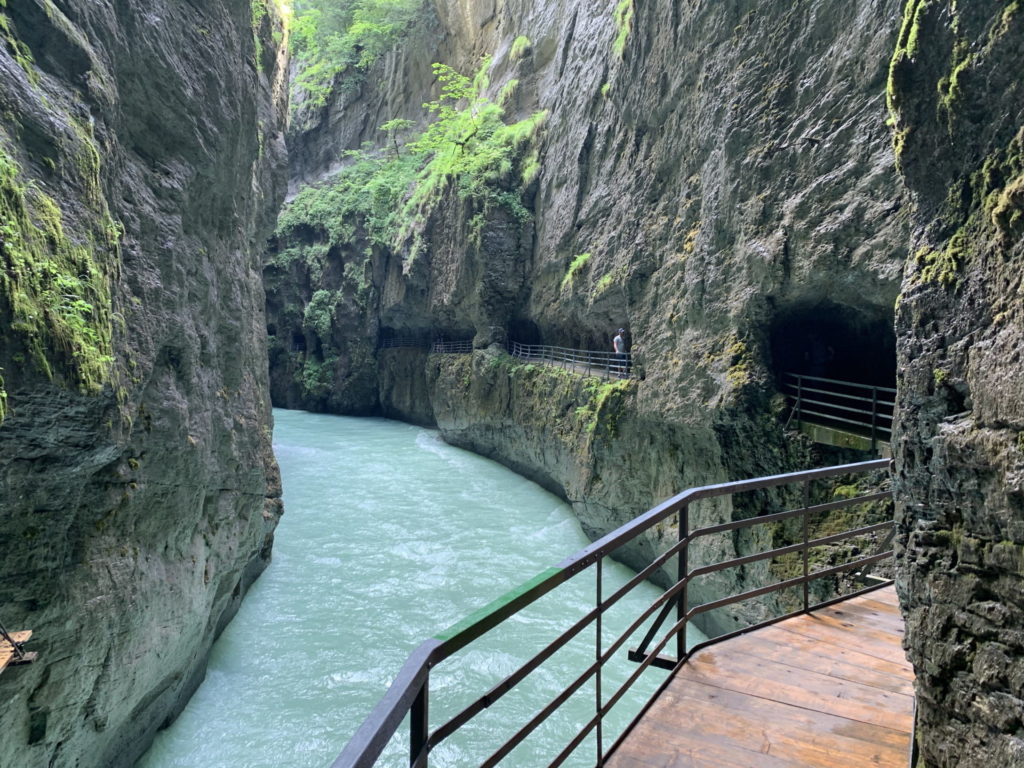
The boardwalk offers stunning views of the gorge and its many waterfalls. There are also several viewing platforms and tunnels that allow visitors to get up close to the natural features of the gorge.
According to the Internet





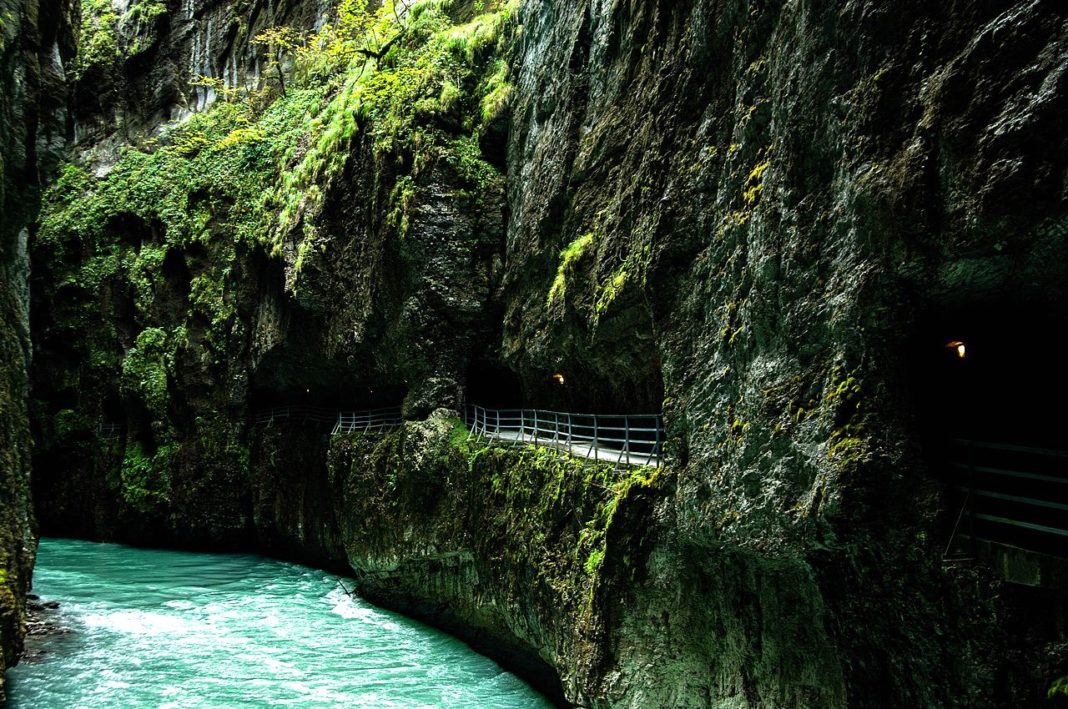




![[HONORARY PROFESSOR OF RECORD FOR PRACTICE AND EMPIRICAL RESULTS – 2024] RECORD HOLDER CHU BAO QUE (BAC GIANG PROVINCE, VIETNAM)](https://worldmark.world/wp-content/uploads/2024/05/z5401509010514_2898fa0bcee3af78744ceb5f3984a5c8-218x150.jpg)




